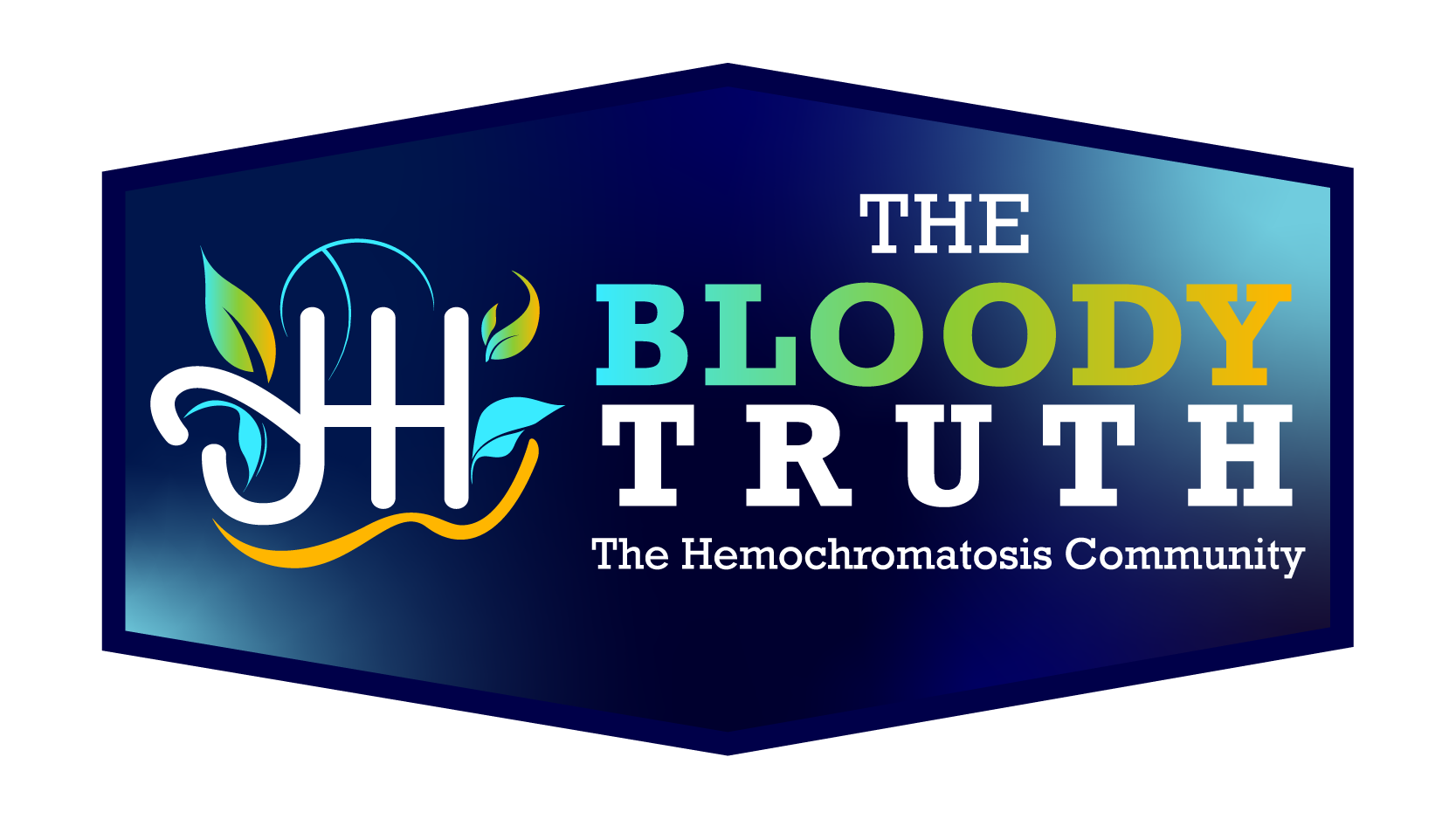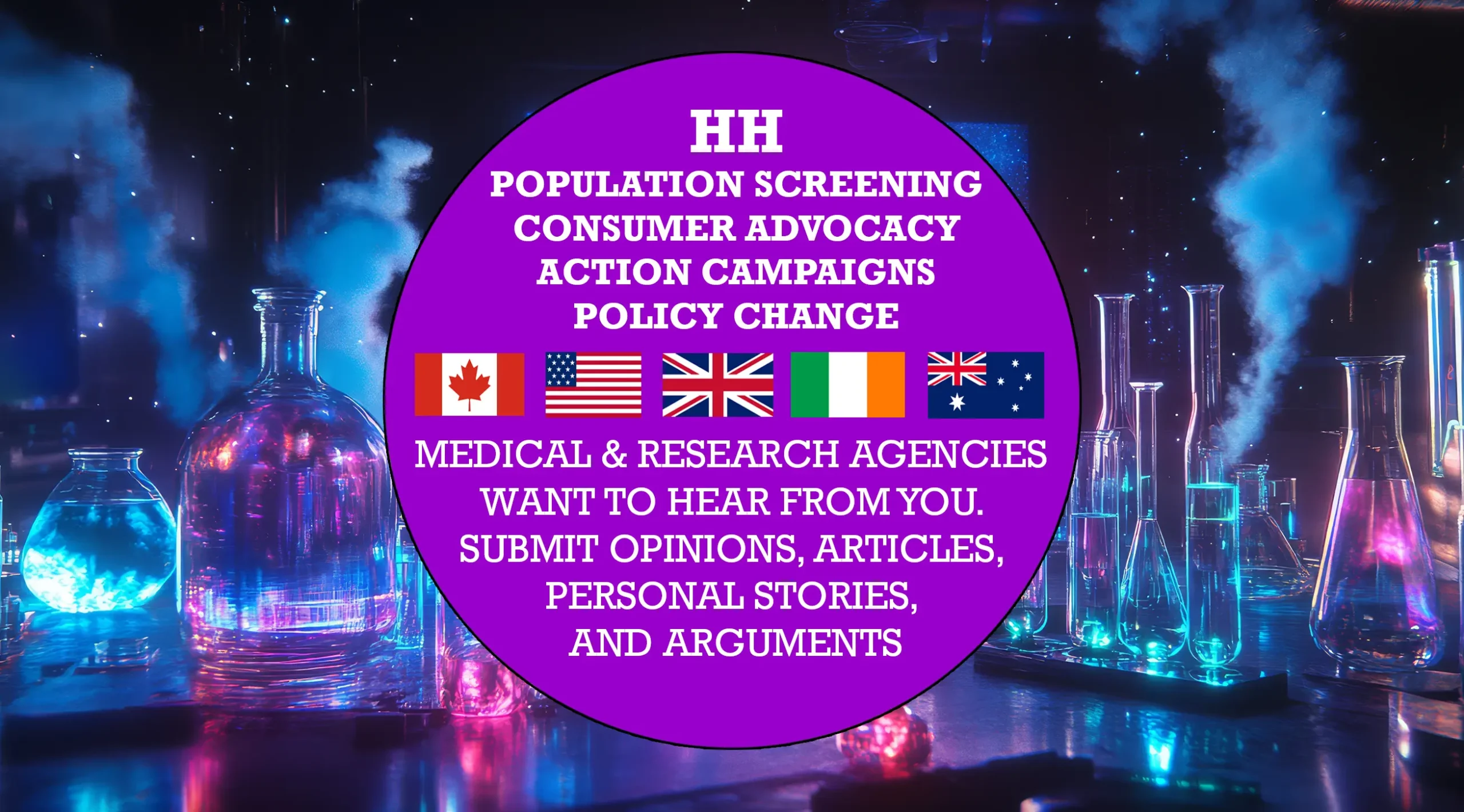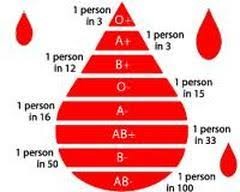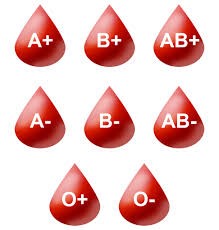Introduction to Hereditary Hemochromatosis:
Hereditary Hemochromatosis (HH) is a genetic disorder that causes the body to absorb too much iron from their diet. This condition leads to an excessive iron buildup in the body, known as iron overload. Over time, iron overload can cause serious damage to various organs, including the liver, heart, and pancreas. Despite being the most common genetic disorder in the United States, Hereditary Hemochromatosis is also among the most underdiagnosed. This article aims to shed light on what Hereditary Hemochromatosis is, its origins, symptoms, and why self-advocacy is crucial for those affected. What is Hereditary Hemochromatosis?
Hereditary Hemochromatosis is primarily caused by mutations in the HFE gene, which regulates iron absorption in the body. When functioning properly, the HFE gene ensures that iron absorption is balanced and adequate for the body’s needs. However, mutations in this gene can disrupt this balance, leading to iron overload.
The Genetics Behind Hemochromatosis:
– HFE Gene: The HFE gene is located on chromosome 6 and plays a critical role in regulating iron absorption.
– C282Y Mutation: This is the most common mutation associated with HH. Approximately 80-90% of cases involve individuals who have inherited two copies of the C282Y mutation.
– H63D Mutation: This mutation is less common and typically results in milder forms of HH. It can occur in combination with the C282Y mutation or on its own.
– HFE Gene Testing: Genetic testing can identify these mutations, providing a definitive diagnosis for those suspected of having HH.
Origins and Prevalence:
Hereditary Hemochromatosis has ancient origins and is most commonly found in people of Northern European descent. The condition is sometimes referred to as the “Celtic Curse” due to its high prevalence among those of Celtic ancestry.
According to the Centers for Disease Control and Prevention (CDC), Hereditary Hemochromatosis affects about 1 in 300 non-Hispanic white individuals in the United States, making it the most common genetic disorder in the country. Despite its prevalence, it is significantly underdiagnosed, often due to a lack of awareness among healthcare providers and patients alike.
Symptoms of Hereditary Hemochromatosis:
The symptoms of HH can be diverse and non-specific, making it challenging to diagnose based on symptoms alone. Some common symptoms include:
– Chronic Fatigue: Persistent tiredness and lack of energy are common complaints.
– Joint Pain: Particularly in the hands and knuckles.
– Abdominal Pain: Often due to liver enlargement or damage.
– Diabetes: Resulting from pancreatic damage.
– Heart Problems: Including irregular heart rhythms and heart failure.
– Skin Discoloration: A bronze or gray tint to the skin, often referred to as “bronzing.”
– Brain Fog: Difficulty concentrating and memory issues.
– Nausea and vomiting
Advanced Symptoms:
As iron accumulates in the body’s organs, more serious conditions can develop, including:
– Cirrhosis or Liver Cancer
– Heart Disease
– Diabetes Mellitus:
Early detection and treatment are crucial to prevent these severe complications:
Diagnosing Hemochromatosis, this is our biggest problem. If ferritin was added to a CBC by the FDA it could save so many lives, not to mention the heartache you go through when you know something is wrong, but no one is listening.
Diagnosing HH typically involves a combination of blood tests and genetic testing. Key tests include:
– Serum Ferritin Levels: This test measures the amount of stored iron in the body. Elevated ferritin levels can indicate iron overload.
– Transferrin Saturation: This test measures the percentage of transferrin (a protein that carries iron) that is saturated with iron. High levels indicate excess iron.
– Genetic DNA Testing: Tests for HFE gene mutations (C282Y and H63D) can confirm a diagnosis of Hereditary Hemochromatosis.
It’s important to note that many healthcare providers may not be familiar with Hereditary Hemochromatosis or may not consider it in their differential diagnosis. Therefore, patients need to be proactive in seeking proper testing and diagnosis.
Treatment for Hemochromatosis:
The primary treatment for Hereditary Hemochromatosis is regular phlebotomy, also known as bloodletting. This process involves periodically removing blood from the body to reduce iron levels. It’s similar to donating blood and can significantly reduce the risk of complications if started early.
– Phlebotomy Schedule: Depending on your ferritin levels, phlebotomies may be required every two weeks until ferritin levels normalize. After this phase, maintenance phlebotomies are typically needed every few months.
Everyone’s Ferritin levels are different, I think the main question patients want answered is how much iron will I lose with each Phlebotomy? Truth is no one knows, you just have to keep getting tested. Most patients want to keep the Ferritin between 50-75.
-Maintenance Phase: Here is the good news! Once you get your ferritin levels down 50 you will feel like the fog has been lifted. You won’t truly know how sick you were until you reach this point. When you start feeling good get out there and live life! Exercise, maintain a healthy diet, keep those levels down!
– Monitoring: Regular monitoring of ferritin levels and iron saturation is crucial to ensure iron levels remain within a safe range.
Click here: Natural Iron Chelators
The Importance of a Hemochromatosis Diet:
In addition to phlebotomy’s, dietary modifications can help manage iron levels:
– Avoiding Heme Iron: Heme iron, found in red meat and other animal products, is more readily absorbed by the body. Limiting consumption of red meat and opting for non-heme iron sources (found in plant-based foods) can help reduce iron absorption.
– Vitamin C: Vitamin C enhances iron absorption, so it’s advisable to avoid consuming vitamin C-rich foods or supplements with iron-rich meals.
– Calcium: Calcium can inhibit iron absorption, so incorporating calcium-rich foods, supplements into meals may help manage iron levels.
Click here: Take the 7-Day Detox Challenge
Protecting Yourself: Be Your Own Advocate:
One of the most significant challenges for Hereditary Hemochromatosis patients is the lack of awareness and understanding among healthcare providers. Many patients report feeling dismissed or misunderstood by their doctors. It’s crucial for individuals with Hereditary Hemochromatosis to be their own advocates and seek out healthcare providers who are knowledgeable about the condition.
A Big Challenge is feeling like you have to defend your genetic disorder:
Common Challenges among friends, family, and even health care professionals:
“It’s just like giving blood why are you making it such an issue people do it every day”
If you are having phlebotomy’s every other week for 6 months to a year, it is not even close to the same thing. People living with Hereditary Hemochromatosis are so tired, it’s like having the flu except you are not sneezing or coughing. You feel like you can’t get out of bed, you ache all over, you’re nauseous, you have bad brain fog.
If you felt like that, would you go and give blood?
If you have Hereditary Hemochromatosis your body is storing most of your Iron (Ferritin) in your liver, and other organs. When Hereditary Hemochromatosis Patients give blood our bodies are extracting the iron from our organs, not our bloodstream like a regular blood donation. It takes two weeks for our bodies to extract the iron and replace our blood cells.
What do Iron & Arsenic have in common? They are both Metals that Poison you:
A Historical Perspective
To understand the severity, let’s revisit some statistics and historical facts about arsenic poisoning:
– Historical Usage: Arsenic was commonly used in the 19th century to poison individuals secretly. It was the weapon of choice in many infamous murder cases. What was especially strange was the perpetrators would care for their victims, be by their side and watch the brutal demise.
– Brutal Deaths: Symptoms of arsenic poisoning include severe abdominal pain, vomiting, and diarrhea, fatigue, leading to dehydration and death.
– Statistics: According to historical criminal records, arsenic was one of the most commonly used poisons in murders. The symptoms of arsenic poisoning often mimic other illnesses, making it a preferred method for discreetly eliminating victims.
Key Steps for Advocacy:
– Join a support group, talk to people who understand you the most, learn from them. Join HH The Bloody Truth, The Hemochromatosis Community
– Educate Yourself: Learn as much as you can about Hereditary Hemochromatosis, its symptoms, and treatment options. Join HH The Bloody Truth, The Hemochromatosis Community
– Request Specific Tests: If you suspect you have Hereditary Hemochromatosis, tell your doctor you want the relevant blood tests (serum ferritin and transferrin saturation) and genetic testing.
– Seek a Second Opinion: If your doctor is not familiar with Hereditary Hemochromatosis or dismisses your concerns, don’t hesitate to seek a second opinion from a specialist, such as an oncologist, hematologist or a geneticist.
The Importance of Community and Support:
Living with Hereditary Hemochromatosis can be challenging, but you don’t have to do it alone. There are numerous support groups and resources available, Join HH The Bloody Truth, The Hemochromatosis Community
, and advocacy tools to help individuals manage their condition and connect with others who share similar experiences.
Conclusion:
Hereditary Hemochromatosis is the most common but underdiagnosed genetic disorder that requires greater awareness and understanding. By taking proactive steps to seek proper testing, advocating for yourself, and making lifestyle modifications, you can effectively manage HH and prevent serious complications. Remember, you are not alone—many resources and support networks are available to help you navigate this journey.
We’d love to hear your thoughts!
– Have you experienced issues with diagnosis or treatment for HH?
– What tips or resources have you found helpful in managing HH?
– Do you have any questions or need further information?
Comments:
IronOverloadWarrior: It took me years to get a proper diagnosis. This information is so crucial!
GeneticAwareness: Great advice on being your own advocate. It made a huge difference in my treatment.
Thank you for being part of this journey toward greater awareness and understanding of Hereditary Hemochromatosis. Together, we can make a difference.














